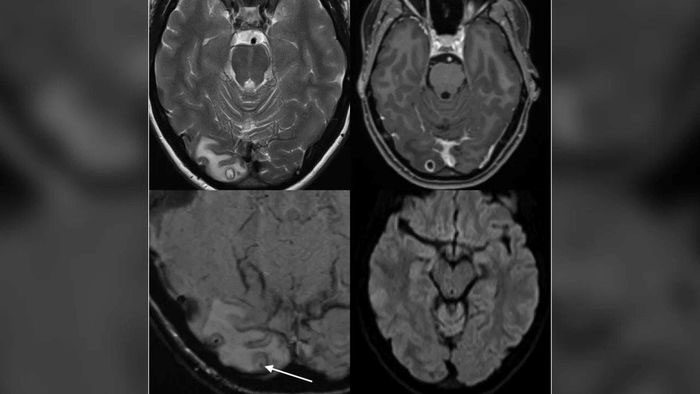On August 29, Australian doctors reported that a roundworm typically found in snakes, “alive and wriggling,” was removed from the brain of a woman.
Doctors performed an MRI scan on the 64-year-old Australian woman after she began experiencing memory loss and noticed an “atypical lesion” in the frontal lobe of her brain.

MRI results show a mass containing Ophidascaris larvae in the woman’s brain. (Photo: CNN).
This was an 8 cm (about three inches) long roundworm known as Ophidascaris robertsi, which researchers indicated is a type of parasite common in wallabies and carpet pythons—but not parasitic in humans.
Infectious disease expert Sanjaya Senanayake stated: “This is the first case of Ophidascaris infection in a human ever described in the world.”
“To our knowledge, this is also the first case involving the brain of any mammal species, whether human or otherwise.”
Researchers believe the woman was infected after foraging for edible wild fruits, likely coming into contact with larvae in solid feces in bushes near her home.
The parasite, appearing as “cord-like structures” on the brain scan, was later identified through DNA testing.
Dr. Senanayake praised the patient’s courage throughout the treatment process. He remarked: “No one wants to be the first in the world to have any disease.”
Expert Senanayake also noted that Ophidascaris roundworms typically infect animals and that “it is likely that other human infection cases will be reported in the coming years.”
These findings have been published in the journal Emerging Infectious Diseases.


















































